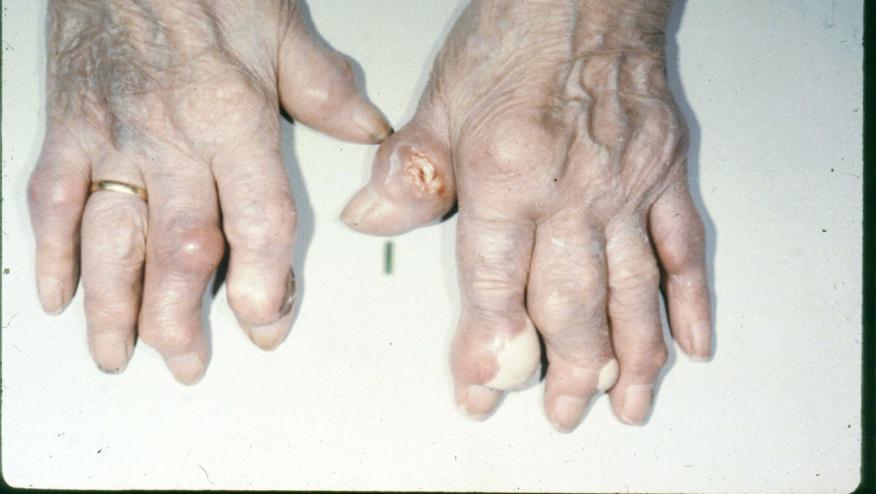Coexistent Gout Increases Risk in Rheumatoid Arthritis Save

It his often said that gout and rheumatoid arthritis (RA) cannot coexist and where confusion exists, a good history and testing for serum urate (SUA) and rheumatoid factor (RF) can usually clarify the dominant disorders. A recent study shows that hyperuricemia and gout are uncommon in RA, but when present shows an increased risk of comorbidities and cardiovascular (CV) mortality.
Subjects from the multicenter Veterans Affairs Rheumatoid Arthritis (VARA) registry were included and assessed for the presence of gout and serum urate (sUA) levels.
From a total of 1,999 RA patients 17% had elevated sUA levels (>6.8 mg/dl) and 6.1% had a diagnosis of gout.
The presence of moderate hyperuricemia (sUA >6.8‐8 mg/dl) was associated with an increased risk of CVD‐related mortality (HR 1.56; 95% CI 1.11‐2.21), but this association was attenuated and became nonsignificant with adjustments for other comorbidities commonly seen with hyperuricemia. There were no associations of baseline sUA with all‐cause mortality.
Thus there is a small subset of RA patients who may have gout or hyperuricemia and such findings should underscore the need to also manage comorbidities that may contribute to cardiovascular risk.










If you are a health practitioner, you may Login/Register to comment.
Due to the nature of these comment forums, only health practitioners are allowed to comment at this time.